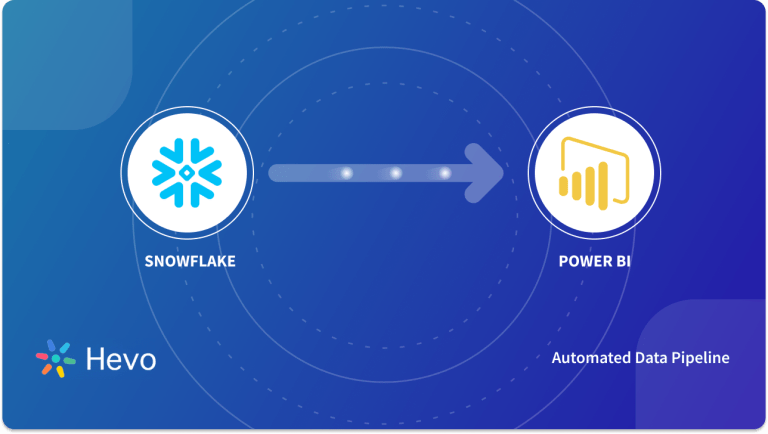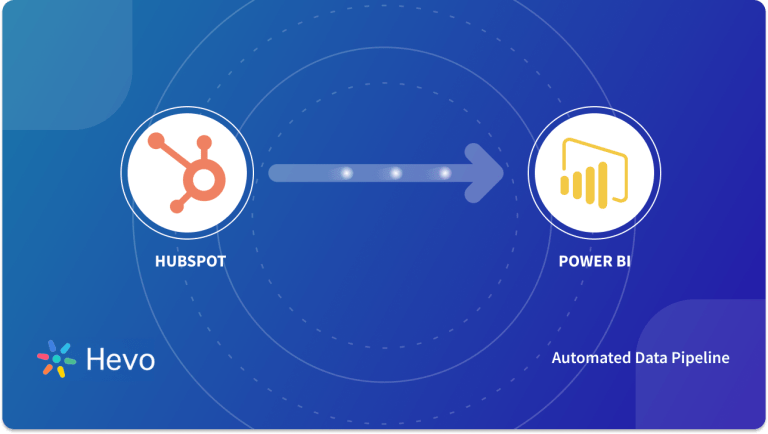This post provides you with a walkthrough of the fundamentals of connecting Jira to Power BI, equipping you with the skills to create powerful dashboards for real-time data analysis. Let’s start with why data integration is essential. Many companies struggle with unorganised data, limited visibility on the progress of the project, and labour-intensive manual reporting. All these challenges can be addressed by integrating Jira to Power BI. By the end of this guide, you’ll have a solid understanding of how to set up a reliable connection between your Jira instance and Power BI.
Table of Contents
What is JIRA?
JIRA is a tool developed by Atlassian, an Australian company. It is one of the most fully-featured, flexible, and agile project and team management tools available in the market. It is widely used by software and business teams to track day-to-day such as:
- Project management
- Issue tracking
- Bug tracking
Jira provides a multitude of features. It provides a 360-degree view of all your processes, providing your whole team visibility. This makes sure that your whole team is informed about the procedures. Jira allows your team to chat, share ideas, attach critical documents, and receive frequent updates on topics that are critical to the process.
By using Jira to manage your projects, you are providing yourself and your team with numerous benefits, such as lesser downtime, efficient prioritization, enhanced teamwork, and more predictability in IT support, operations, and marketing.
Hevo seamlessly integrates your Jira data into your destination with automated pipelines that require no coding. Hevo automates the entire process, from data transfer to schema conversion, ensuring a seamless and real-time integration, ensuring your data is ready in warehouses for analysis with tools like Power BI.
Why Choose Hevo?
- Set up an automated seamless connection between Jira and your warehouse in just a few clicks.
- Use auto-mapping to assign your fields within your warehouse schema automatically.
- Capitalize on real-time reports by using Hevo’s real-time data sync.
Try Hevo and join a growing community of 2000+ data professionals who rely on us for seamless and efficient migrations.
Get Started with Hevo for Free
What is Power BI?
If you are using JIRA data (projects, sprints, issues, stories, etc.) in Power BI, you are already aware of the benefits. While there are numerous tools available in the market, Power BI is the market leader in the data visualisation space and is an ideal tool for interpreting and visualising your Jira data.
Power BI is a business intelligence data visualization solution. It allows users with even basic knowledge of data visualization to create interactive, immersive dashboards and reports, providing actionable insights that drive business results.
With Power BI, you can connect to multiple services you use to run your business, such as JIRA, Google Analytics, Salesforce, Sage, QuickBooks, Zendesk, etc., to get customized reports and dashboards built on top of your data from these services.
Why Combine Power BI and Jira?
- Advanced Data Visualization: Connecting Jira to Power BI enables you to enhance your data visualizations, transforming your data into easy-to-understand dashboards. This enables your team members to interpret the data at a single glance. This fast-tracks the decision-making by visualizing all data into a single dashboard, enabling managers and stakeholders to make faster and more data-driven decisions.
- Comprehensive Reporting: By integrating these tools, your team can gain access to the project from multiple perspectives. It provides analysts with precision data tracking and enables them to identify inefficiencies, the progress of the project, and the workloads of different teams. Providing this level of visibility reporting can help the team with self-evaluations, providing them with insights on where they may be lacking.
- Streamlined Data Source: The main advantage of integrating these tools is the ability to merge data from multiple systems into a unified view. Power BI allows you to integrate your Jira data with information from other data sources, providing you with more informative dashboards and a more unified view. These integrations help in providing more accurate and cross-functional insights. You can try Hevo for integrating all your data sources into one destination.
How to Connect JIRA to Power BI?
JIRA provides a REST API that allows data extraction. In this post, you will be pulling data from JIRA into Power BI using the JIRA content pack developed for Power BI. The content pack stores a snapshot of the configuration data of both the data source and the target, therefore enabling Power BI users to quickly connect to the services they use to run their businesses so that they can generate new insights into their data.
You can also take a look at how you can easily connect Jira to a database like MySQL for easily accessing your data.
Prerequisites
- Get Power BI Desktop.
- A Power BI Pro account.
- An Atlassian account that you can use to log in to JIRA.
Methods to Move Data from JIRA to Power BI
Method 1: Using API Token
Step 1: Generate an API Token
You will need an API token for the account you will be using to connect the Jira Power BI Content Pack. Navigate to this link https://id.atlassian.com/manage/api-tokens and click on Create API Token. Give your API a meaningful name.
Save the generated API token in a safe and secure place as we are going to use it later.
Step 2: Download and Install the JIRA Content Pack
There used to be a Power BI content pack for JIRA to perform this function. However, this app is no longer available on the Power BI app marketplace. Nonetheless, you can download the .pbit version to use in Power BI Desktop.
To install the template file, directly double-click on the .pbit file you just downloaded. The content pack will open in a new Power BI Desktop file.
When the installation is complete, the new app appears on the Apps page.Step 3: Add the API Token to the Jira Power BI Content Pack
In the Power BI dashboard:
- Select Apps in the nav pane.
- Select JIRA from the list of available apps.
- Opening the app prompts you to set your JIRA URL, for example, https://company.atlassian.net
- Next, you need to provide authentication credentials.
- Use your email address as your username and the new API Token as your password.
Once the connection has been completed, Power BI will automatically create a workspace with a dashboard and a set of Power BI reports that automatically show your data and provide visual insights about your business with data from JIRA.
The JIRA content pack shows you real-time, actionable data about your project, e.g. the progress rate, the relative workload for each assignee and a summary of your bugs and issues grouped by status and assignee. Clicking on any of the dashboard tiles will open the JIRA content pack report, where you can interact and explore your data in Power BI.
After the initial connection, the dashboard and reports will continue to update daily. You can control the update schedule by selecting the dataset, and configuring it to refresh at the exact times you choose. You can also customize your dashboards and reports.
Limitations of this Approach
There are a few limitations of manually transferring data from Jira to Power BI.
- There is no documentation or support provided for this app.
- The connection has a 100 records limitation that occurs on the JIRA side since the JIRA content pack in Power BI Service relies on JIRA API.
- The app is prone to data-volume-related problems. Accessing a large JIRA dataset using a Power BI report based on this app will cause the app to fail.
- Dataset refresh takes a long time.
- It takes a long time to process data even if you don’t load all of the fields into your report.
Method 2: Using curl
Connecting Jira to Power BI using curl requires retrieving Jira data using its REST API and then importing that data into Power BI. This method is more manual and requires using curl to retrieve the data from Jira and Power BI’s built-in functionality to handle the data. We have provided you detailed step-by-step guide on how to do this:
Step 1: Generate Jira API Token
Before connecting Jira to Power BI using curl, you are required to create an API token in Jira:
- Click on the Jira account option and navigate to Account Settings.
- Under the Security section, locate the “Create and manage API tokens” option.
- Click Create API token, name the token, and click Create.
- Copy the generated token, as you will require it during authentication.
Step 2: Determine Your Jira API URL
Jira provides a REST API that allows you to pull data. Usually, the URL format for the API is:
https://yourcompany.atlassian.net/rest/api/2/search?jql=yourJQLQuery- Replace
yourcompanywith your actual Jira instance name. - The
jql=yourJQLQuerypart allows you to filter and define the Jira issues you want to retrieve. You can edit the query to filter by project, status, assignee, and other criteria.
Example to get all issues from a project with key PROJ:https://yourcompany.atlassian.net/rest/api/2/search?jql=project=PROJ
Step 3: Make a curl Request to Jira API
To pull data from Jira, you have to use curl to make an HTTP request to Jira’s REST API. This request will be authenticated using your email address and the API token you generated earlier.
Example curl Command:
curl -X GET \
'https://yourcompany.atlassian.net/rest/api/2/search?jql=project=PROJ' \
-H 'Authorization: Basic ' \
-H 'Accept: application/json'Where:
- Customize
yourcompanywith your Jira domain. - Replace
PROJwith your project key or the JQL query to filter the issues. <encoded_email:api_token>should be your Base64-encoded email and API token (explained below).
Step 4: Base64 Encode Your Jira Email and API Token
The Authorization: Basic header expects a Base64-encoded string of your email and API token. To generate this, you need to concatenate your email and token with a colon (:), and then base64-encode it.
For example:
your.email@example.com:your-api-tokenTo Base64 encode this, you could use an online encoder, or if you’re on Linux or Mac, you can use this command:
echo -n "your.email@example.com:your-api-token" | base64This will give you the Base64-encoded string to replace in the curl command.
Step 5: Retrieve the Data Using curl
Once you’ve completed the curl request, Jira will return a JSON response containing your issue data. The output will look something like this:
{<br>"issues": [<br>{<br>"key": "PROJ-1",<br>"fields": {<br>"summary": "Sample Issue 1",<br>"status": {<br>"name": "To Do"<br>}<br>}<br>},<br>{<br>"key": "PROJ-2",<br>"fields": {<br>"summary": "Sample Issue 2",<br>"status": {<br>"name": "In Progress"<br>}<br>}<br>}<br>]<br>}Step 6: Save the Data to a File (Optional)
To make importing this data into Power BI easier, you can save the JSON data to a file. Use the following curl command to save the output:
curl -X GET \
'https://yourcompany.atlassian.net/rest/api/2/search?jql=project=PROJ' \
-H 'Authorization: Basic ' \
-H 'Accept: application/json' \
-o jira_data.jsonThis will save the response in a file named jira_data.json.
Step 7: Load the Data into Power BI
Now, you need to load the data into Power BI:
- Open Power BI Desktop.
- In the Home tab, click Get Data and select JSON.
- Look for the saved JSON file
(jira_data.json)and open it. - Power BI will load the JSON data and display it in a structured format in the Navigator pane.
- Click Load to import the data into Power BI.
Or, you can directly input the curl command output into Power BI by using Web as the data source:
- Choose Get Data → Web.
- Enter the Jira API URL and authentication details (as shown in the curl command above).
Example:
https://yourcompany.atlassian.net/rest/api/2/search?jql=project=PROJIn Power BI, when prompted for authentication, select Basic Authentication and enter your email and API token as the password.
Step 8: Transform and Visualize Data in Power BI
Once the data is loaded into Power BI, you can use the Power Query Editor to clean, transform, and shape the data into a format suitable for analysis.
Step 9: Refresh the Data
To ensure your Power BI report is updated with the latest data from Jira, you can schedule a data refresh:
If you are using Power BI Service, go to your report and configure a scheduled refresh in the Dataset settings.
Limitations of Connecting Jira to Power BI Using curl
There are several limitations to manually transferring data from Jira to Power BI using the curl command. Some of which are:
- Data transformation has to be handled manually. Jira API returns nested JSON, which requires cleaning and shaping before it can be used in Power BI.
- No built-in documentation or support is provided when using curl to retrieve data from Jira. You need to rely on self-help and community forums.
- The connection is subject to the Jira API limitations, which includes a 100-record limit per request. You are required to manually handle pagination by using query parameters such as
startAtandmaxResults. - This approach can be prone to problems related to data volume. Fetching large datasets from Jira using
curland manually loading them into Power BI can cause performance issues or processing failures.
Next Steps
- Share and collaborate on interactive data visualizations using Power BI Pro for self-service analytics.
- Distribute the app to your colleagues.
- Questions? Try asking the Power BI Community.
Why Integrate Jira to Power BI
Companies can now employ data analysis of business data from Jira to Power BI to execute better strategies in general. IT personnel can remain ahead of the curve with Historical, Present, and Predicted perspectives of business processes as Jira data can be used for Analysis in BI tools.
Here are a few popular use cases where Jira to Power BI data transfer benefits can be implemented.
1) Managing Multiple Projects
Integrating Jira with Power BI provides a seamless transfer, giving managers insights into the complete project information. Providing them with this 360-degree view enables them to keep a close eye on the project’s status and Key Performance Indicators (KPIS) at a high level
2) Remote Support Team
Features such as oversight tracking provide additional information on the Average Time to close a ticket and the percentage of tickets that are closed on time. As a result, the support crew can be supervised in a more central manner, allowing creative flexibility as much as possible. This is useful for identifying recurring issues and trends in occurrences.
3) Managing Resources for Software Development
Another use of Jira to Power BI data transfer can be in managing resources for Software Development. BI tools continue to pose one of the most critical problems in software development: whether or not to embrace the concept of Agile Development, which encourages developers to be flexible and innovative in delivering exactly what the user requires.
Again, such technologies do not enforce rigid schedules or tasks; instead, they just make everyone’s job easier. Many organizations are actively using Jira to Power BI data transfer for this purpose.
Conclusion
To sum up, this post explored how to migrate data from Jira to Power BI for efficiently analyzing your project data. While this integration offers valuable insights for strategic decision-making, it’s equally important to consider data from other applications, databases, and sources to gain a more comprehensive and well-rounded view of your operations.
If you’re looking for an all-in-one solution that will help you transfer data and transform it into analysis-ready form, then Hevo Data is the right choice for you! It will take care of all your analytics needs completely automatically, allowing you to focus on key business activities.
Sign up for Hevo’s 14-day free trial and experience its robust infrastructure and user-friendly interface. Also, check out Hevo’s pricing and choose a plan that suits your organization.
FAQs
Can we connect Jira to Power BI?
Yes, Jira can be connected to Power BI using Jira’s REST API or third-party connectors like Power BI Connector for Jira
How to extract data from Jira to Power BI?
You can extract data by using Jira’s REST API, installing a connector plugin, or exporting Jira data to a CSV file and importing it into Power BI.
How to create a Power BI report from Jira?
Connect Jira to Power BI, load the extracted data into Power BI, transform it as needed using Power Query, and create visualizations in the Power BI report editor.






